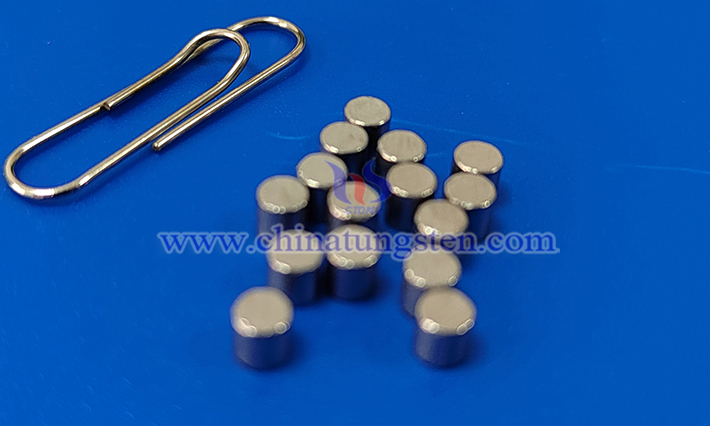Factors Affecting the Purity of Barium Tungsten Electrode Materials
- Details
- Category: Tungsten Information
- Published on Tuesday, 03 June 2025 18:40
The factors affecting the purity of barium tungsten electrode materials run through the entire process of its preparation, processing, storage and use, involving multiple links such as raw material selection, process control, and environmental management.
I. Raw Material Purity and Quality
1.1 Tungsten Matrix Raw Materials
Purity Requirements: High-purity tungsten powder must be used to reduce the introduction of impurities.
Pretreatment: Tungsten powder needs to be annealed, ground and screened to remove internal stress and surface impurities to ensure the purity of the matrix.
1.2 Barium Source Material
Precursor Selection: Commonly used barium hydroxide (Ba(OH)₂) or barium carbonate (BaCO₃), need to be dried in advance to remove crystal water to avoid residual moisture affecting subsequent reactions.
Solution Preparation: The barium salt solution needs to be prepared with deionized water, and a small amount of ammonia can be added to adjust the pH value to promote the dissolution of barium ions and improve the uniformity of the solution.

2. Preparation Process Control
2.1 Mixing and Molding
Uniformity: Tungsten powder and barium salt need to be evenly distributed through mechanical mixing or vacuum impregnation to avoid local agglomeration or porosity.
Molding Pressure: Cold isostatic pressing is used to form a porous green body and control the porosity to balance the mechanical strength and barium impregnation requirements.
2.2 Sintering and Reduction
Temperature Gradient: Low-temperature sintering removes volatiles, and high-temperature sintering promotes the densification of tungsten particles and reduces porosity.
Atmosphere Control: Sintering in hydrogen or vacuum environment to prevent oxidation of barium and tungsten and maintain material purity.
Reduction Conditions: Hydrogen reduction temperature and holding time affect the deposition morphology of barium, and local overheating should be avoided to cause barium volatilization.
2.3 Impregnation Process
Cyclic Impregnation: Repeat the drying-impregnation steps after vacuum impregnation to ensure that the barium salt fully fills the pores of the tungsten matrix.
Solution Permeability: Adding dispersants improves solution permeability and reduces pore residues.
3. Processing and Post-Processing
3.1 Mechanical Processing
Clean Environment: All processing steps must be carried out in a clean and dry environment to avoid oil or dust pollution.
Surface Treatment: The electrode surface needs to be finely polished to reduce the thermal resistance caused by surface defects.
3.2 Heat Treatment and Activation
Activation Process: It is carried out in two steps:
The First Step: high temperature to remove impurities and oxides.
The second step: activate barium oxide under high temperature and high vacuum environment to ensure uniform distribution of salt.
Vacuum Control: The vacuum degree must be stable during the activation process to avoid volatilization of barium salts and cause component segregation.
3.3 Coating Technology
Anti-Sputtering Coating: Plating Ir, Re or rare earth oxides can improve the electrode's anti-welding performance, but the coating thickness and interface bonding strength need to be optimized to avoid increasing thermal resistance.

4. Storage and Use Conditions
4.1 Storage Environment
Vacuum or Inert Gas: The electrode needs to be stored in a dry vacuum or inert gas (such as nitrogen, argon) to avoid moisture absorption or oxidation.
Exposure Time Limit: The electrode should not be exposed to the atmosphere for more than 48 hours to prevent surface contamination.
4.2 Operation Specifications
Clean Operation: All operations must be performed in a clean and dry environment to prevent oily fingers or dust from contacting the electrode.
Heating Rate Control: If the electrode absorbs moisture, the heating rate must be reduced to prevent surface spots from forming.
5. Impurity and Defect Control
5.1 Impurity Influence
Oxygen and Sulfur Impurities: They will react with tungsten or barium to form oxides or sulfides, forming a thermal resistance layer, which needs to be removed by high-temperature vacuum treatment.
Trace Elements: Rare earth elements (such as lanthanum and cerium) can be added to refine the grains, but excessive amounts will lead to a decrease in thermal conductivity.
5.2 Micro Defect Management
Porosity Control: The porosity of the porous tungsten matrix is negatively correlated with the thermal conductivity, and the pores need to be reduced by optimizing the sintering process.
Grain Boundary Strengthening: Doping or heat treatment can improve the grain boundary strength and reduce the extension of thermal shock cracks.
6. Environment and Working Conditions
6.1 Working Temperature
High Temperature Performance: The electrode emits a large current at high temperature, but the life is shortened; the life is extended at low temperature, but the emission current is reduced, which needs to be balanced according to the application scenario.
6.2 Thermal Cycle and Mechanical Stress
Thermal Fatigue: Frequent temperature changes will cause thermal stress and microcracks, and the thermal expansion mismatch needs to be alleviated by optimizing the material ratio and introducing transition phases.
Mechanical Damage: Mechanical stress during installation or use may damage the heat conduction path, so it needs to be handled with care.
6.3 Working Medium
Corrosive Environment: Exposure of the electrode to corrosive gas or plasma will cause surface erosion, and anti-corrosion coating or optimization of the working medium is required.
- Chinatungsten Online: www.tungsten.com.cn
- CTIA GROUP LTD: en.ctia.group
- Tungsten News & Price: www.ctia.com.cn
- Molybdenum News & Price: news.molybdenum.com.cn
- Tel.: 86 592 5129696; Email: sales@chinatungsten.com



 sales@chinatungsten.com
sales@chinatungsten.com